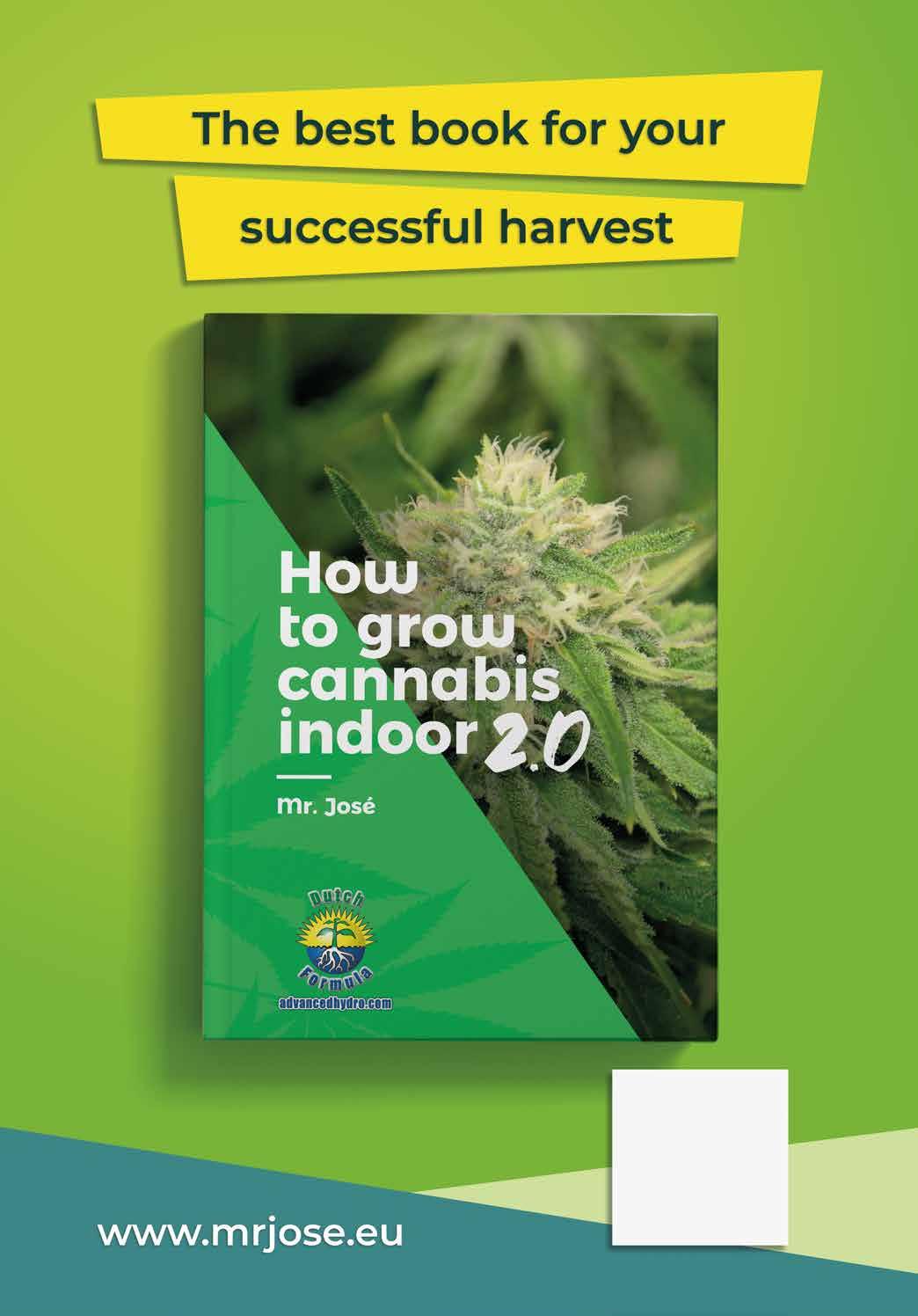














Brazil’s Supreme Court on June 25 voted to decriminalize possession of marijuana for personal use, making the nation one of Latin America’s last to do so, in a move that could reduce its massive prison population. The justices must still determine the maximum quantity of marijuana that would be characterized as being for personal use and when the ruling will enter into effect.
All the justices who have voted in favor said decriminalization should be restricted to possession of marijuana in amounts suitable for personal use. Selling drugs will remain illegal.
In 2006, Brazil’s Congress approved a law that sought to punish individuals caught carrying small amounts of drugs, including marijuana, with alternative penalties such as community service. Experts say the law was too vague and didn’t establish a specific quantity to help law enforcement and judges differentiate personal use from drug trafficking.
Police continued to arrest people carrying small quantities of drugs on trafficking charges and Brazil’s prison population continued to swell.
“The majority of pre-trial detainees and those convicted of drug trafficking in Brazil are first-time offenders, who carried small amounts of illicit substance with them, caught in routine police operations, unarmed and with no evidence of any relationship with organized crime,” said Ilona Szabó, president of Igarapé Institute, a think

tank focusing on public security. Congress has responded to the top court’s ongoing deliberations by separately advancing a proposal to tighten drug legislation, which would complicate the legal picture surrounding marijuana possession. Last year, a Brazilian court authorized some patients to grow cannabis for medical treatment after the health regulator in 2019 approved guidelines for the sale of medicinal products derived from cannabis. But Brazil is one of a few countries in Latin America that hasn’t decriminalized the possession of small quantities of drugs for personal consumption.
The Supreme Court’s ruling has long been sought by activists and legal scholars in a country where the prison population has become the third largest in the world. Critics of current legislation say users caught with even small amounts of drugs are regularly convicted on trafficking charges and locked up in overcrowded jails, where they are forced to join prison gangs. Brazil ranks behind U.S. and China in countries with the highest prison populations, according to the World Prison Brief, a database tracking such figures.
Some 852,000 individuals were deprived of liberty in Brazil as of December 2023, according to official data. Of those, nearly 25% were arrested for possession of drugs or trafficking. Brazilian jails are overcrowded, and Black citizens are disproportionately represented, accounting for more
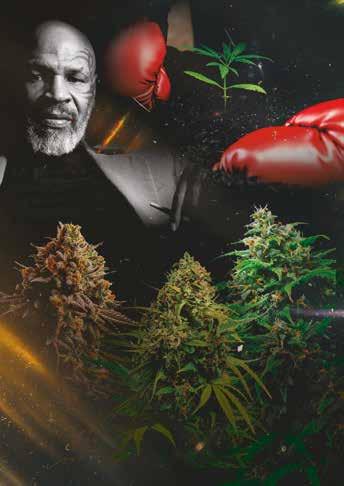



than two-thirds of the prison population. As in other countries in the region, like Argentina, Colombia and Mexico, medicinal use of cannabis in Brazil is allowed, though in a highly restricted manner. Uruguay has fully legalized the use of marijuana, and in some U.S. states recreational use for adults is legal. In Colombia, possession has been decriminalized for a decade, but a law to regulate the recreational use of marijuana so that it can be sold legally failed to pass in the Senate in August. Colombians can carry small amounts of marijuana, but selling it for recreational purposes is not legal.
The same goes for Ecuador and Peru. Both distribution and possession remain illegal in Venezuela. Argentina’s Supreme Court ruled in 2009 it was unconstitutional to penalize an adult for consuming marijuana if it didn’t harm others. But the law has not been changed and users are still arrested, although most cases are thrown out by judges.
Uruguay became the first country to legalize marijuana for recreational use in 2013 although it was only implemented in 2017. Uruguay’s whole industry, from production to distribution, is under state control and registered users can buy up to 40 grams of marijuana per month through pharmacies.
Source: ABCNews




Page 8
Runtz A true West Coast wonder

Page 10
Meloni’s War on CBD weed

Page 18
Black Muffin F1 Fast Version® and Papaya Zoap F1 Fast Version®
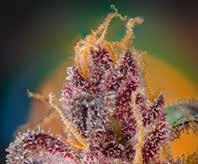
Page 22 Preparing for harvest

Page 24
Drought-tolerant, Tropical & Alpine Gardens with Jorge Cervantes





With Stoney Tark
As a first-time grower, you may think to yourself which is better, to grow lots of smaller sized plants, or to grow a low number of monster sized plants? In this article I will highlight the pros and cons of each as far as time, money, electric and nutrient usage and general practicality are concerned.
The pros and cons of growing small cannabis plants in a 1.2-meter tent (6.5 litre size pots)
Plant count
Inside a 1.2 meter grow tent, you would be able to fit 9 or 12 pots inside. The plants will grow together in a Sea of Green set up, meaning once flowering, the entire tent will be full from wall to wall with buds.
Vegetative time under 18/6
Cannabis seeds will need to be grown under 18/6 for 2–3 weeks before flowering, and clones will require 10–14 days before they can be flowered.
Flowering time under 12/12
Cannabis plants that remain short to medium height will flower faster and mature quicker than large sized plants. Growing small sized plants ensures that you do not need to add an extra 7–10 days for ripening.
Electric usage
The entire crop from start to finish will take between 10–12 weeks depending on the strain and vegetative time, meaning the electric bills will be significantly lower.
Nutrient usage
Far fewer nutrients will be used when growing plants in small sized pots in a Sea of Green set up, compared to large sized cannabis plants. This means your nutrients will go much further and save you spending more money every harvest.
Watering frequency
A good rule of thumb is to supply 10% of the pot size in litres, so in this case you would give the plants 650 ml of nutrient solution once the roots become dry.
Growing medium
You will only need 60 litres of growing medium to get the ball rolling. That may sound like nothing if you have been used to growing in large sized pots.
Plant maintenance
By growing shorter sized plants, you will be
Clones can be flowered sooner and will require 6–7 weeks under 18/6.
Flowering time under 12/12
One of the downsides of growing massive plants is that they may demand a week or two more to ripen up and fully mature, in comparison to smal-

limited to how much plant training you can do, and how bushy the canopy can be. Small plants require the least amount of plant maintenance.
Flower quality
In my opinion, large sized plants focused primarily on yield can actually take away from the most desirable traits, producing a medium quality end product compared to smaller sized buds.
Time between the next harvest
Using smaller sized plants will allow you to plant new seeds or clones every 70–84 days. The grower down the road who prefers big plants will only just be flowering as you are harvesting!
The pros and cons of growing large cannabis plants 1.2-meter tent (25 litre sized pots)
Plant count
Inside a 1.2 meter tent, you would want to grow either 1-4 large sized plants, depending on your goals. Generally 4 large sized plants would be ideal and will also allow the shortest vegetative time.
Vegetative time under 18/6
Growing seedlings to a mature and bushy size in a 25 liter pot may take between 7–10 weeks.
ler sized plants. So add on a few weeks extra if you want to harvest at the right moment.
Electric usage
Unfortunately, there will be a big electric bill on the way when growing in 25 litres and larger sized pots. Considering that you will have your lights on 18 hours a day for 50–70 days during veg and 8-10 over the 12/12.
Nutrient usage
Large sized plants may drink much more than you originally anticipated, and before you know it, you have run short on nutrients and require more water than expected. Don’t be surprised when you are feeding mature large sized plants more often compared to smaller plants.
Watering frequency
On the basis that you have 4 pots which are 25 litres in size, then you should give each plant 2.5 litres. Overall, 10 litres of water every day / 70 litres per week can quickly add it.
Growing medium
Get ready to fill those pots with 100 litres of growing medium! Carrying two 50 liter bags of soil or compost over your shoulder into the house is required every harvest. This may be a logistical nightmare depending on where you live or if you have transport.
Large sized plants that have been trained up to fill out the tent will require hand on time and lots of regular visits to the grow room. Especially if the goal is to use a screen and SCROG the plants.
Flower quality
In the same way huge outdoor plants can lack the final quality and essence of indoors, large sized buds can also become airy, less resinous and not pack the same punch or terpene profile.
Sacrificing quality for yield is not the wisest move in my opinion.





Secret Jardin is expanding its line of Grow Stations with two new models in larger sizes, coming soon. These elegantly designed grow kits empower you to grow your own vegetables, fruits, herbs, and flowers in the comfort of your home. They operate quietly at 24 volts, feature the latest technologies in lighting, ventilation and high quality materials for successful home cultivation, combined with lowest consumption.
The Original kits are ideal for cuttings and seedlings with their spring-like lighting and shelves, while For Twenty kits provide intensive summer lighting and web support for fruit-bearing plants. www.secretjardin.com








With Stoney Tark
Top tip #1 - Grow room heater
There are various types of heaters that can be used inside grow rooms to help keep the lights on and lights off temperatures in the optimal zone. There are plenty of heaters available from grow shops and online that are suitable for grow rooms, such as heated wire cables, reptile heat mats, electric heaters and gas burners. My top tip here is to avoid high wattage electric heaters, as they can cause power trips and blast through your electric, and instead consider a gas burner that can be manually turned on and off when needed.
Top tip #2 - Insulate the walls
Converting a cellar, attic or spare room into a secret garden is one of the most exciting times for a grower. However, it is important that you insulate and heat the room properly. It is during the Winter months when humidity levels will increase and the temperatures will drop below 16 degrees Celsius. Insulating the grow room walls with insulation foam and using a heater is an excellent way to help keep a warm and cozy grow room even when there is snow and ice outside. My tip here is to visit your local hardware department store and see what your options are based on your budget and the size of the grow room.
Top tip #3 - Buy a dehumidifier
There is not much a grower can do when the weather outside is cold and wet, causing the humidity levels inside the grow room to rise. During the vegetative stage, cannabis plants prefer a wetter environment (70–80% relative humidity), however during the flowering stage, this amount of humidity will cause buds to start molding. A dehumidifier can be plugged in and left inside the grow room, allowing the air to be cleaned and the excess moisture to be removed. My tip here is to buy a good quality dehumidifier, as it will be a lifesaver during flowering.
Top tip #4 - Consistent air flow
I cannot stress enough how important it is for your grow room to function with a consistent temperature and humidity level, as well as good quality air flow and movement. You will be at a far greater risk of becoming infected with powdery mildew or mold when there is little air flow and the grow room has stagnant air pockets in the corners. My tip here is to use a tall and slim tower fan, or use two 9 inch oscillating fans set to turn at different times for each other, to create the ideal amount of fresh air.
Top tip #5 - Raise pots off the floor
Cold grow rooms will generally mean cold floors, resulting in cold pots and cold roots.
The joy of Summer is over, and now we embrace the colder Winter months. As an indoor grower, how cold and wet the weather outside is can have an effect on the grow room temperature, humidity and potential risk of pathogens and yields. In this article, I walk you through 7 top tips to apply to your grow room to allow you to grow the best crops possible and keep your stash tubs full to the brim.

Plants that experience colder temperatures can become stressed, causing stunted growth and potential root rot. The easiest way to combat this issue, and my tip here, is to raise the pots off the floor by a few inches using small blocks of plywood or stone bricks. The air inside the grow room will insulate the roots and pass through the growing medium, producing a warmer and preferable environment for root growth and nutrient uptake.
Top tip #6 - Night time temperature
Unless you have a hygrometer inside your grow room, you will not know what the temperature and humidity levels were when the lights were off. Most digital hygrometers are designed with a highest and lowest reading setting, so you can see at the press of a button just how cold your room was when the lights were switched off.
My tip here is to make sure the light off temperature is between 19 and 20 degrees Celsius and that there is a constant source of fresh air from oscillating fans.
Top tip #7 - Using LED grow lights
One of the main reasons why LED grow lights are so popular amongst home growers is the fact that they run cooler temperatures than HPS. The only downside to this is that during the colder and more challenging months of the year, indoor temperatures can become affected, and supplementing the grow room with a heater is required.
My tip here, if using cool LED lights, is to either lower the light to around 40 cm from the top of the canopy or to place a heater in the room and compensate that way.
Conclusions
Even though you may feel like you have only just gotten over adjusting to the hot Summer months, the ability to adapt as an indoor grower will be the difference between stunted, stressed and low yielding plants and healthy, happy and large yielding ones. In my opinion, every grower should have a dehumidifier, humidifier and heater on standby and, depending on the weather, can adapt accordingly.

The world of cannabis genetics is truly dynamic. Genetic variability means growers and breeders have had to find innovative ways to keep prized phenotypes as static as possible or risk losing desirable tastes, aromas, and effects. Simply letting them go to seed doesn’t work, as all of the offspring will exhibit some degree of change, resulting in slightly different chemical profiles, sizes, and shapes.
To overcome this difficulty, breeders started cloning the most desirable phenotypes. Not only did this guaranteed reliability for
home growers, but it streamlined commercial-scale operations. An exact copy of the mother plant, clones produce an identical phenotype under the same environmental conditions. While extremely useful, clones have some infamous drawbacks.
Scaling up operations with clones all depends on keeping mother plants alive and well; if you lose the mother plants, you lose the desired phenotypes. On top of this, as live organisms, clones are highly predisposed to disease and stress during transpor -
tation, making them a risky investment for big businesses. Finally, clones are relatively hard to come by, with much less choice for consumers. Clones have served the cannabis industry well, but F1 hybrid seeds are poised to usurp this method of phenotypic capturing.
Created by crossing two highly pure inbred parent lines, F1 hybrids are remarkably uniform. While not perfect, the offspring are incredibly similar in size, shape, potency, and productivity. This level of reliability
means commercial growers can offer a uniform product to consumers. Plus, seeds are far easier to transport, store, produce, and scale up compared to working with clones. F1 hybrids have only just arrived on the cannabis scene, but techniques such as in vitro culturing are likely to make producing F1 hybrids even easier and more efficient. It might take some time for them to catch on, but F1 hybrid cannabis seeds have the potential to revolutionize the industry and offer a genuine alternative to risky and costly clone cultivation.
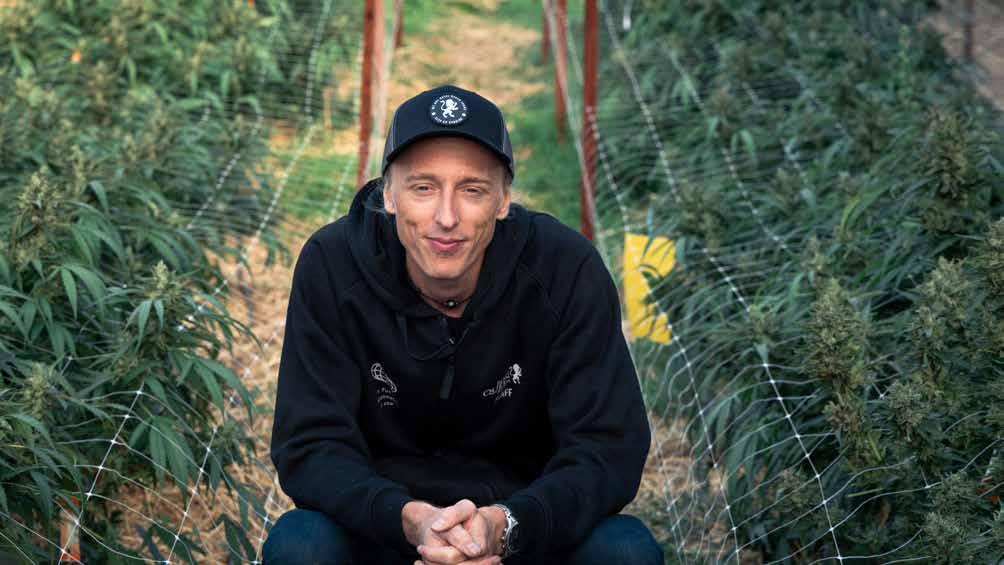
Words & Pics: Green Born Identity – G.B.I.
If a prestigious seed company such as Barney’s Farm put its seal of quality on a mega-strain like Runtz and adds it to its range of seeds, growers have any reason to expect the highest calibre of quality and look forward to all the highlights that have made this Californian West Coast strain so much sought-after worldwide: Ample amounts (up to 600g/m2) of big buds showered with trichomes, bursting with fruity sweet terpenes and loaded with a hefty psychoactive potency feeding on an extremely high THC count of 25-29%.
This botanical grandeur is created by the medium tall growing plants within a mere 55-60 days of flowering. And the magic also happens even outdoors under natural light, where Runtz excels with an early finishing in the third to fourth week of September and paradisiac yields of up to 1.5 kg per plant, growing 1.5-2 metres tall. Corresponding to its genetically well-balanced nature equal in sativa and indica, it delivers a way of effect that has it all, acting both mentally uplifting and physically relaxing. It also provides highest enjoyment through its delicious fruit taste with a sourly hint of citrus lingering long on the palate.
That very alluring profile of properties brought The Doc, a huge Barney’s fan, into the grow arena – he was super keen on this variety and eagerly subjected it to his test grow routine with two plants. The two young plants arisen from the two quickly sprouted feminised seeds exhibited much branching propensity and uniform vigorous bushy growth with dark green medium wide leaves. Having spent three weeks in the veg stage at 18/6 and reached 27 and 29 cm tall, The Doc triggered them into blooming by switching to 12/12.
A glorious parade of flowers featuring fat bulbous nuggs drenched in resin
Both Runtz plants revealed a “damn sporty stretching behaviour”, as The Doc put it, triplicating their height during the first 4.5 weeks of flowering. But in doing so remained pretty compact and solid, “they’ve got an ideal indoor form”, praised The Doc. And were quick to bloom - he

happily noticed jump-start flowering with early trichome production, after hardly four weeks already, the young buds were adorned with a scintillating glint and about to take on a roundish thick shape. The Doc noted that the leaf colour was becoming increasingly dark, newly developing sugar and shade leaves not only turned dark green but in parts also dark violet.
Reported The Doc six weeks into flowering: “They’ve massively put on weight in the past two weeks, these lovely Runtz buds are coming out as some fat bulbous nuggs. What I also like is their high calyx-to-leaf ratio that will make harvest work a fast cinch. They keep on pumping out resin glands in abundance manifesting in a silvery white look. Also, the flowers are meanwhile spreading a delicious scent which just as described is fruity sweet and a little bit citrusy.
After precisely 60 days, both Runtz plants had turned fully ripe. “Wow, I hadn’t expected they’d take such an additional big leap in the final three weeks! The buds are swollen to the max and heavily dusted with crystals. Many calyxes in the upper zone of head and side buds have turned violet in the last third of flowering which is very gorgeous to look at of course. This undoubtfully was the glorious parade of flowers I had expected!”, swooned The Doc. Final heights came out at 78 and 82 cm.
A most beautiful icy glory was radiated by the dried buds then, accompanied by fruity sweet scent clouds so concentrated he almost felt high just through inhaling these: “This fragrance dazzles the senses, evoking happy feelings surely heralding the effect to be tested now…” The ample yield outcome gave him a happy feeling, too, as both plants had entered the 100+ grams range with dry results of 105 and 112 grams.
The first waft of vapour billowing from his Venty vaporizer (loaded with 0.5 grams of Runtz) into his mouth bestowed the sort of premium flavour experience on him he had expected: “the insanely sweet fruit flavour sticks to the palate, gently tickling it with a refreshing dash of lemon – a sophisticated weed taste of the highest order!” The Doc consciously took only one deep long vaporizer hit and let it sink in because he wanted to find out whether Runtz had what it takes to be a one hit wonder… “and man you bet it had!
After about half a minute my body was seized by a mellow, warm vibrating feeling, while the sun began to shine in my head, Runtz gave me a good deal of balm for the soul”, he said totally enthused.
A euphoriant feeling and physical relaxation which after three more tokes culminated in a hyper-potent maximum of effect that brought off the feat of deeply astonishing the old cannabis afficionado and keep him super high for more than two hours which made him resort to superlatives: “Rarely in my life have I consumed such a strong marijuana strain!”
The Doc summed up his Runtz experience with another hymn of praise: „A true West Coast wonder! One of the most coveted sorts of marijuana in recent years, this variety has definitely come to stay and there’s no doubt it will become an iconic classic in the course of time. After my fantastic test grow I’ve got great news for the global cultivators community - Barney’s Farm provides awesome high-grade Runtz seeds enabling every grower to live the Runtz dream!”


Genetics Runtz (Zkittlez x Gelato)
Vegetative stage 21 days (after germination)
Flowering stage 60 days / 55-60 days in general
Medium Bionova Bio Soilmix, 11 litre pots
pH 6.4-6.7
EC 1.2–1.6 mS
Light Veg stage: 2 x SANlight EVO 5-100, switched to level 2 out of 3 Flowering: 4 x SANlight EVO 5-100, switched to level 2 out of 3
Temperature 18-29°C
Air humidity 40-60%
Watering manually
Fertilisation Bionova Soil Supermix, plus PK 13-14 in the flowering stage
Additives/stimulants Bionova Silution, The Missing Link, Vitasol and X-cel
Tools CleanLight Pro for mould prevention
Height 78 + 82 cm
Yield 105 + 112 g

Text & photography: Derrick Bergman / Gonzo Media
The radical right-wing politician Georgia Meloni has been prime minister of Italy for two years now. She is on a collision course with the large ‘cannabis light’ industry, because Meloni also wants to ban cannabis products with less than 0.2 percent THC. The sector is fighting back and is counting on protection from Brussels.
Italy has a rich history of cannabis cultivation, which literally goes back centuries. Perhaps that is why the CBD industry has taken off so quickly. This spring I travelled through Italy by train and in every city I came across CBD shops and vending machines with CBD weed. To get weed from such a machine you have to scan the chip on your identity card, a friendly Neapolitan explained to me. He allowed me to use it to buy a box of “Gelato”. The weed didn’t look bad, although it was too old and dry for my taste. In Catania, Sicily, the friendly older lady behind the counter of the Urban Haze CBD shop advises me to keep the receipt for my weed. The local police can sometimes be difficult. Repression has increased. She tells me about the hemp restaurant that her son has opened a little further down the road. Frenz Hempfood Experience turns out to be a gem, with hemp beer and hemp paste, but also cosmetics, CBD oil and CBD weed. A vivid example of the versatility and economic potential of the hemp plant.
But Italy‘s first female president doesn‘t want to hear about it. Nor does the previous government. On November 1, 2020, CBD oil was declared a narcotic by decree, only available on prescription. The CBD industry managed to suspend this decree one day after it came into effect. A remarkable victory, but the war on cannabis light was far from over. In August 2023, the Meloni government issued a new decree to stop the free sale of CBD oil. In June of this year, another attack followed, in the form of an amendment to the so-called Safety Act. If this amendment is adopted, the sale of flower buds and cannabis derivatives with less than 0.2 percent THC will henceforth be prohibited in Italy.
Where does this hatred of cannabis come from? I put that question to Enrico Fletzer, an Italian journalist and Soft Secrets contributor specializing in cannabis and board member of Encod, the European NGO for better drug policy. Fletzer: ‘Meloni’s father was caught with 1600 kilos
of hash in Spain when the future prime minister was very young. She refers to her aversion to him. But the question is whether she became a fascist because of drugs or because of herself.’ In Italy, many people are in prison for possession of or trafficking in drugs, Fletzer explains. ‘About a third of the total number of prisoners. Drug use and possession of small amounts have been decriminalized in Italy, but you can still be severely punished, for example by withdrawing your passport or driving license.’ The minister of agriculture in the Meloni government is Francesco Lollobrigida, grandson of the film diva. Fletzer calls him ‘one of the problematic ministers in an incredible series of dystopian figures who govern the country’.
Lollobrigida is married to Meloni’s sister, who heads the political secretariat of her party, Fratelli d’Italia. Fletzer: ‘When he was asked about the ban on CBD weed, he said: if you really have to, smoke a real joint.’ Although the radical right has a solid majority in parliament, Fletzer doubts that Meloni will succeed in banning cannabis light. ‘The sector is actually regulated by the EU regulation 1308/2013 on cannabis light, which takes precedence over national regulations. But this will be discussed quickly with the EU, because Georgia Meloni wants to be recognised as a democratic partner at EU level.’
Several cannabis companies’ organisations have written to the European Commission in Brussels asking it to intervene. They point out that several EU rules have been violated, such as the free movement of goods and free competition, and that the Italian plan is incompatible with the EU’s common agricultural policy. The action could lead to infringement proceedings against Italy. One of the organisations that signed the letter is Canapa Sativa Italia, which has more than 240 cannabis companies as members. Chairman Mattia Cusani told La Repubblica in June that the police have raided sixty percent of its members in recent years. In eighty percent of the cases, they got the seized CBD weed back, but it could no longer be sold. No member has been convicted. Cusani: ‘As entrepreneurs, we feel like victims of bureaucracy and a certain ideology towards our sector.’ The turnover of the Italian cannabis light industry is estimated at five hundred million euros per year and provides jobs for more than fifteen thousand people. Imagine what those numbers would look like if Italy opted for cannabis legalization instead of this pointless rearguard battle.
There is a good chance that a ruling from the European Court of Justice will stop Meloni‘s war on cannabis light. On November 19, 2020, the court ruled in the Kanavape case that CBD cannot be considered a narcotic and that the sale of CBD products cannot be prohibited if they are legally produced in another EU member state. The ruling can be found on the internet with the code ECLI:EU:C:2020:938.



Enrico Fletzer, a journalist specializing in cannabis and board member of Encod, says: ‘Meloni’s father was caught with 1600 kilos of hash in Spain when the future prime minister was very young.’
How exactly did that go? Soft Secrets investigated.
When Giorgia Meloni was one year old, father Francesco left the family in 1978 and moved to the Canary Islands. There he started a restaurant, but business did not go well and Francesco got into debt. To do something about that, he decided to start smuggling hash. Together with a number of companions, he sailed in 1995 on the yacht Cool Start, which was registered under a French flag. On the
Scannen Sie den QR-Code:
Star had evaded a storm, but Francesco later gave a different explanation during the trial.
The Spanish newspaper Diario de Mallorca delved into the archives for details of the trial that took place in 1996. Francesco stated during the trial that he had kept the hash smuggling a secret from his fellow passengers. In other words; he took all the blame on himself. When his accomplices, who reportedly included two children from a later marriage, found out, they allegedly went to the port of Mahon. Francesco stated that he would receive an amount of approximately 315,000 euros for the smuggling. After his confession, he was sentenced to 9 years in prison. His companions were given four years in prison. After his release, Francesco continued to live in Mallorca and stood for election twice as a communist. He died of leukemia in 2012. When Giorgia Meloni was eleven, she broke off all contact with him of her own accord. In an interview, she said: ‘I don’t


like talking about him, but he was not a good person.’ In her autobiography, she wrote that the last time she heard from her father was when he sent her a happy birthday message for her 13th birthday. Nunzio Perella, a former Mafia member, later stated that Meloni’s father
had been given the task of smuggling hash by Mafia boss Michele ‘the Crazy
Perella also said that Francesco had been doing this for a long time, sometimes twice a month. Senese is now serving a 30-year prison sentence in Italy.


Text & photos: Derrick Bergman / Gonzo Mediaa
Somewhere in the southernmost Dutch province of Limburg, there exists a unique cannabis company. Innexo conducts research for major players in the Dutch cannabis industry and tests their products and cultivation methods – all legally. Founder Dominique van Gruisen: ‘Dutch horticulture has grown through collaboration. Why can’t that be done in the cannabis sector?’
When Dominique van Gruisen (37) founded Innexo in 2021, he already had an impressive resume in the cannabis industry. Raised in a respectable Flemish family, he discovered cannabis during his studies in Antwerp. The plant became his passion and his life. In 2007 he grew his first plant, Blueberry by Dj Short. He spent a lot of time on online cannabis forums and learned more and more about the medicinal power of cannabis. He came into contact with Joep Oomen, a legendary Dutch activist who died in 2016 and who was founder of the first Belgian cannabis social club.
For about two years, Dominique was responsible for the grow operations in the club. The club grew rapidly during this period, but in 2013 he left. “Joep and I did not part as the best of friends,” he reflects eleven years later. “We had quite a few differences of opinion, especially about the quality of the cannabis.” At the end of 2013, Dominique moved to Colorado, where recreational cannabis had only been legal for a year. The online photos of his Belgian plants caught the attention of people in the USA.
Colorado became a disappointment however. The company Dominique worked for wanted to do too many things at the same time. “The problem then becomes focus. You see that with other cannabis companies too, including the big Canadian ones. They want to do everything perfect and then lose their focus, their core. A tomato grower is not going to concern himself with breeding. Stick to what you’re good at.” The two years in Colorado were educational though. He saw a lot of things go wrong. For example, he had to do job

interviews for master grower. “Then I would have found someone suitable and six months later I would be told: he is no longer with the company, but we do have his genetics! So many good people were abused.”
Back in Belgium, Dominique wrote a book about home cultivation and became an advisor to the advocacy organization
MedCan. Within two years, MedCan grew from one patient and a doctor to thousand patients and five hundred doctors. The whole thing collapsed due to mismanagement by the chairman. Dominique started working for Cannovex, a company that wanted to grow medicinal cannabis in Belgium. The intended nursery never came to fruition, but the lobby did result in an official cannabis agency
in Belgium. And Cannovex obtained a research permit in the Netherlands. But the founder changed course and Dominique decided to pack his bags. “It had nothing to do with my specialization, my passion and knowledge anymore.”
Just like in his previous roles, he gained useful experience at Cannovex. “I learned a lot about how biotech and pharmaceuticals
work. I rolled into it with my cannabis experience and started looking at how you can build bridges between horticulturists and pharmaceutical companies. Because they don‘t speak the same language. One makes pills, the other grows living organisms. I was able to make the translation to let them communicate.”
After leaving Cannovex, Dominique had to start all over again. During a visit to a horticultural test center in (Dutch) Limburg, an idea pops up in his head.
Dominique remembers this eureka moment. “How many different types of plants, products and technologies were being researched there… I thought: this is just a Walhalla for innovation. This would be fantastic for cannabis!” Everything
cucumbers or tomatoes: 1.75 kilos. For cannabis grown in a greenhouse, that is 2300 kilos of CO2 per kilo of product. “And for indoor cultivation, you can double that. So we focus on: how can we put less energy into cultivation and combine that with better standardization of cultivation?”
The third spearhead, breeding, Soft Secrets sees with it‘s own eyes when we visit the Innexo cultivation facility. In a spacious greenhouse, bathed in LED light, there are seven large cultivation tables. One of them is the ‚sativa table’.
He shows me a plant that he has grown from a bag of carefully preserved seeds from Papua New Guinea from 1979. A typical landrace sativa; long and stretched.
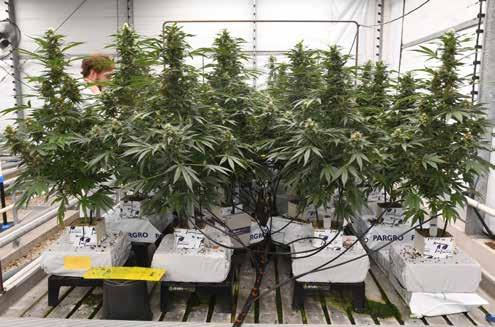
came together in the idea to start a cannabis testing center. In Colorado, they once ordered forty different LED lamps to investigate which were best suited for growing cannabis. Better products and methods benefit everyone. Innexo wanted to help companies improve their products and methods and accelerate innovation.
Dominique: ‘Every producer thinks he is accelerating. They all do it on their own square meter, within their own house. But Dutch horticulture has become big through cooperation. Why can’t that be done in cannabis?” There is too little cooperation in the cannabis world anyway, he thinks.
“It’s every man for himself, everyone wants money fast. But if we work together, we can really push the boundaries with innovative cultivation techniques and, for example, new genetics.” That benefits the patient, but also the grower and the technology developer. “If you can create a playground where you bring those three groups together, then we can do really great things. That can put the Netherlands back on the map in terms of innovation in one go.”
Innexo has three spearheads: molecular farming, energy efficiency and breeding. Molecular farming is simply the cultivation of cannabis for its constituents, the molecules that the plant produces. To illustrate the second spearhead, Dominique explains the CO2 footprint of one kilo of
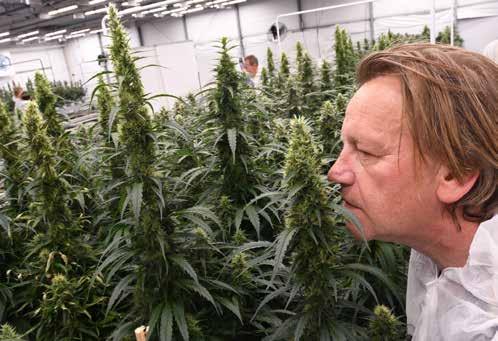
technology for international medicinal cannabis producers.
After many detours in the cannabis world, Dominique can now optimally use his passion, knowledge and experience. “The goal is to contribute to giving the patient the best, safest and most affordable product possible. Not by producing it ourselves, but by working behind the scenes on new cultivation concepts, new genetics, finding the buttons you have to turn to express the right ingredients.” All the weed grown at Innexo will not be made available for consumption. Bummer.
absorbs nutrients. “Producers will finally know whether or not the plant absorbs a substance. Or when they need to use a little less of a certain substance. We will definitely see that evolution in the coming years.” The second project is still in its infancy. “I want to see if we can use smart camera techniques to see what kind of phenotype the cannabis seed is.
One of our sister companies has already succeeded in doing this with other plants. With grass seed, they can distinguish between tall and short grass, while the seed looks exactly the same to the eye.”

Asked about future projects, Dominique mentions two in particular. The first one is leaf sap analysis, which was developed by Brightlabs BV and for which Innexo created the sampling protocol. The leaf sap analysis shows almost in real time how the plant


As an indoor grower, we are able to have access to our plants fulltime and can decide when to start training and pruning them. Over the years, I have tried all sorts and know the best way to grow is using pruning combined with plant training. In this article, I will explain the benefits and why you should start considering training and pruning your indoor garden.
When is the right time to start plant training?
You do not want to start too early on, when the seedlings are still focusing on developing a strong set of roots, and you do not want to do it too late either. The right time to start training your plants is when they are strong, flexible and old enough to respond and recover without inflicting permanent damage or stress.
Plant training techniques such as tying down, topping, snapping stems and pruning can all be systematically applied to your plants from week 3 onwards of 18/6. Clones will be far more receptive to plant training than younger seedlings, however the most important factor is the plants are well-developed and will be able to endure any type of stress.
What equipment will I need to start training and pruning?
As far as equipment and tools are concerned, you will not need to spend much money to acquire the relevant items. For low stress training / tying down, you will need to buy some thick string or gardening wire. For pruning, you only need a sharp scalpel or sharp pair of scissors and for everything else such as stem snapping and topping, you will just need to know the technique and use your fingers and thumb. Always make sure that your equipment is clean, sterile and sharp and when pruning you achieve a clean and precise cut as close to the branch as possible.
The benefits of pruning and training cannabis plants

Plant training can reduce the final plant height, making it ideal for small spaces. More light becomes available to the inner canopy when branches are tied down. Pruning allows the plants to put all their energy into the top growth and big buds.
• Top quality cuttings can be pruned off and later rooted for the next crop rotation.
• Training for a long time can turn one plant into a massive size, ideal for low plant counts.
• Air flow around the pruned plants will be greater, reducing the risk of insects and pathogens.
Training cannabis plants is inexpensive to do so, making it ideal for a beginner grower. Different strains will react differently to training techniques, making some better for sativa.
How much recovery time do cannabis plants need?
This will depend on how mature the plants are
and if you are performing a high or low stress technique. As far as topping is concerned, it will typically take a plant 3–5 days before the auxiliary shoots grow back where the plant was topped.
Side branches that have been carefully tied down will grow back and resume their normal growth structure within 2–3 days.
The only high stress technique that require around 7–10 days to fully recover is snapping stems, or what some people call super cropping. From my experience, systematically snapping the stems and side branches will cause plants to become thick, dense and able to yield greater amounts. If you do not allow plants to fully recover, you will run the risk of causing long term damage which can result in hermaphroditism, stunted growth and low yields.
Before you go ahead and begin your plant training regime, it is important to consider other
factors. Below are my top tips that you can apply to your garden, saving you time and producing the most abundant crops.
Top tip #1 - Avoid using thin wire
One thing that I have found over the years is that thin gardening wire can actually do more harm than good. During the earlier stages of a cannabis plant’s development, wire may seem like a good idea, however the wire can actually cut through plants and in some cases sever the wood as plants get bigger. My tip here is to use string instead of thin wire to prevent this problem.
Top tip #2 - Consider plant stress
There is no point in training and pruning your plants if they do not get a chance to recover, and too much stress has been inflicted. My tip here is to consider how much stress the plants will undergo and to wait 5–7 days before getting hands on with your plants. Stressed plants will respond by growing slowly, which can result in low yields and potentially seeded cannabis buds.
Top tip #3 - Root the cuttings
The main advantage of pruning a bushy plant is the fact you are able to produce a handful of good-sized clones. Not only will the removed growth be ideal for strong and healthy cuttings, you will be able to root the clones and have a new set of plants ready to flower once you have harvested your current crop. My tip here is to buy a small tent and use it as a vegetating room for the clones. This way you will always have a room of plants flowering and never run short of buds again!








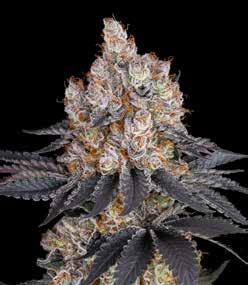



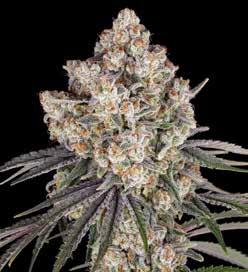


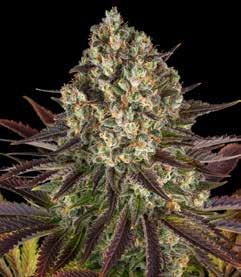








Text & photos: Derrick Bergman / Gonzo Mediaa
The move of the largest British cannabis fair Product Earth to London did not go as the organization hoped. The event, which has been held in various discreet locations across the Midlands since 2015, took place at Drumsheds. This enormous complex in the north of London was an Ikea flagship store until 2022 and has been a “super club” since last year – with a capacity of 15,000 visitors.
On Saturday, September 7, visitors stood in line for about two hours to be body searched in the dark parking garage. Two security guards were available for this purpose, and a third checked the doctor‘s prescriptions of medicinal cannabis users. All stands were in one large hall; many British companies and relatively few large European usual suspects. A few facilities that are standard at cannabis fairs on the continent were missing, such as an information desk, a program booklet and cash machines. Cannabis was openly sold from various stands, a facility that European fairs do not have... The prices were high, like £80 for 1/8 oz (3.54 grams) Californian weed was no exception.
It was most pleasant in the two large outdoor areas, despite the hostile environment of asphalt, black shipping containers and concrete. There was plenty of cannabis smoking and the vibe was excellent. According to the organization, smoking was not only allowed outside. Early on Sunday morning, Product Earth announced via email and social media: ‚Due to unforeseen circumstances and in spite of extensive & thorough conversations with the venue, Product Earth Day 2 has been cancelled. This is heartbreaking news.‘ A more extensive message followed a day later. Day two was canceled because “a minority of people decided that they would smoke inside the building. (…) This triggered pre-fire alarms, which would have set off sprinklers, putting the safety of people at risk.‘ Drumsheds blocked the second day, for fear of losing their permit. “This decision was entirely out of our hands,” says Product Earth.
It once again shows how silly the cannabis/smoking laws have become in the UK. Hopefully the event will survive this setback and can go ahead in 2025, in London or elsewhere.












Sweet Seeds Strain
Text: Jaypp / Photos: Jaypp and Sweet Seeds®

Directly from the Olympus of the best cannabis strains, we receive two appetizing genetics from the renowned seed bank Sweet Seeds ®. These strains have certain things in common, but with some particularities that make them very special. Today we take a walk through the cannabis paradise with: Black Muffin F1 Fast Version ® (SWS111) and Papaya Zoap F1 Fast Version ® (SWS112).
Before we get down to business, I want to clarify what Sweet Seeds ® means by the term F1 Fast Version ®, of which they are creators and pioneers in the market. To get straight to the point, let me clarify that these are photoperiod-dependent genetics, with all the hybrid vigor since they are the first filial generation, and they only flower once they receive a certain amount of hours of darkness.
They are not autoflowering, so they can be kept as mother plants or given a long growth period before flowering. The difference with the ‘normal’ versions lies in their accelerated flowering, allowing the growers to harvest the plants one to two weeks earlier. It may seem like a small difference, but I assure you that for outdoor growers who need to harvest before the arrival of cold and the rainy autumn season, it is a gift from heaven. Well, from the Sweet Seeds ® breeders.
After completing an indoor grow with these two beautiful strains, I’m going to share my impressions and, at the end, I will also provide a tasting note, so I hope you reach the epilogue and enjoy their rich aromas with me.
I used Coco as growing medium, latest-generation LED lights, and mineral fertilizers,
complemented with beneficial bacteria and enzymes to keep the roots healthy. I always use Airpot pots because of their ability to dry the substrate, which helps not only to prevent fungal attacks but also promotes greater water and nutrient consumption, resulting in very robust and well-developed plants. In the case of these two strains, it’s advisable to give them a long vegetative period since once they enter their flowering cycle, growth stops and the plants start focusing on bud formation.
The Papaya Zoap F1 Fast Version ® plants developed a more branched appearance with somewhat thinner branches, but eventually ended up with a good central bud and beautiful side buds loaded with trichomes. Throughout the growth, the great vigor provided by the parent strains used in the cross was evident, all of them with a very American character [Bruce Banner Auto ® (SWS91) x Papaya] x (Zkittlez x Zoap). They had no issues with feeding and reached the end of flowering having consumed nearly 100% of their nutrients. I’d say this strain tolerates high doses of fertilizer, so I recommend using complete fertilization in every watering.
On the other hand, Black Muffin F1 Fast Version ® always maintained a much more Indica structure, with broader leaves, very hard main stem and also hard side branches, with enviable health and vigor. This strain turned out to be somewhat easier to grow and is ideal for small spaces since it stretches little in flowering, but it loads the buds very well, which end up being large and dense.
Another very striking feature of this strain is the coloring of its buds, displaying dark purple and reddish hues that also tint the
leaves, resulting in great majesty. Also noteworthy is its high trichome production capacity, creating a visual ensemble reminiscent of frosted fruits. These characteristics come from the cross between Red Hot Cookies ® (SWS83), also from Sweet Seeds ®, and Black Lemon Auto, both strains of purple color and high production.
An important point that I recommend is not to overfeed around the 6th week of flowering, as there are individuals in both strains that showed signs of maturity very quickly. All the plants were harvested in the 7th week. Therefore, at the slightest sign of pistil oxidation, start flushing the soil.
THE TASTING: THAT LONGAWAITED MOMENT
I’m sure you were eager to get to this point. All growers enjoy the cultivation process and highly appreciate the moment of the tasting because it’s something we’ve done ourselves, with great passion and no small effort. Regarding these two wonderful strains from Sweet Seeds ®, I have nothing but praise because, even after so many years, one continues to be surprised and discovers new nuances and flavors.
The Papaya Zoap F1 Fast Version ® is a truly fruity plant, with very exotic and tropical aromas. Sweet mango appears, with sometimes citrusy and sometimes spicy touches, with a slight earthy background that accompanies the rest of the flavors all the way to the lungs. It’s a delight with every puff and, even though it is fruity, it has a lot of body and is very filling.



The effect is dynamic and very cheerful, with a soft, relaxing finish that completes the experience of total happiness. However, it is strong, so if you don’t have much tolerance, take it slowly and choose the occasions accordingly.
In the case of Black Muffin F1 Fast Version ® , we also encounter fruity flavors but more citrusy and sweet-and-sour, reminiscent of red forest fruits. It’s another experience that feels very fresh in the mouth and is perceived as very potent with each puff. Don’t underestimate this beautiful lady, as like the previous one, these strains can reach up to 25% THC. The effect here is a bit more relaxing and pairs well with the end of the day.
To complete the experience, I made a marijuana cake with the trimmings after manicuring, and I must say that the vaporizer plus a piece of cake resulted in a pleasant gathering that my friends and I enjoyed very much. So you know, put on the apron and get cooking!
Thanks for reading, and I invite you to visit the Sweet Seeds® page, where you’ll find many strains and a blog with a wide variety of articles and cannabis recipes.
Sweet harvests!


Ed Rosenthal
Greenshock Farms and Mendo Dope grow the massive tree-sized cannabis plants the West Coast has become famous for. Their award-winning flowers have rich scents and high terpene content, which they attribute to their back-to-nature volcanomound soil method and diligent work in breeding cultivars that thrive in the garden’s microclimate.
Greenshock produces one sun-grown harvest a year. Clones and seeds for the pheno hunt are started indoors in January and February under basic fluorescent fixtures. The plants root and grow vegetatively indoors in the winter and are then transplanted to one to two gallon (4–7.5 l) pots before being placed in a greenhouse in the early spring. By April they are planted directly in the ground and have grown 2 to 3 feet (0.6–1 m) high. When they are harvested in October, they will be up to 12 to 14 feet (3.6–4.25 m) tall and wide, producing an average of 8 to 10 pounds (3.6–4.5 kg) of finished dried buds each. Each root system is planted in a volcanoshaped mound that rises about three feet (1 m) from the soil’s surface. Without the mounds, the plants would not grow as healthy or large. Mark Greyshock of Greenshock Farms says the practice is common with giant pumpkin farmers because it secures the roots in the ground, manages moisture, and increases oxygen at the root level while preventing root rot and providing the plant nutrients through layers of natural amendments to the native soil ecosystem.
The mounds are formed, amended, and replanted each year and throughout the plant’s growth and flowering through top dressing of dry amendments, including alfalfa straw, compost, manures, kelp, guanos, lava rocks, and trace mineral sand. Once planted, the soil will not be disturbed again. The goal is to provide a healthy root environment thriving with microlife to fuel the massive growth and flowering of the giant plants.
Cover crop seeds such as red clover and Dutch white clover are tossed into the top layers of the mounds early in the planting season. The rows of plants are interspersed with native plants, a technique
Mark Greyshock learned in the 1990s while tending clandestine gardens in Southern California’s Santa Ana mountains. At the time, blending the native plants in the garden was a technique used to help evade law enforcement, but Mark fell in love with the native plants and the bees, butterflies, and hummingbirds they attracted to the garden. He attributes the quality of the finished product to the garden’s healthy soil ecosystem.
Growing in Mendocino, they use regenerative farming practices that do not disturb the native redwood forest or damage the local native soils. Alongside every year’s “Avenue of the Giants,” or the massive plants grown from clones to harvest their flower, is a “pheno patch,” where more mounds are utilized to test the seed-plant variations of new cultivars they are experimenting with.
The Greenshock Mendocino farm is a partnership between longtime grower Mark Greyshock and brothers Daniel and Bryan Eatmon, aka Old E and Bleezy of Mendo Dope. Mendo Dope is known for its music and YouTube videos that celebrate the culture and communities of California’s Emerald Triangle.
Old E and Bleezy started working as cannabis trimmers in 2007. Gradually their home garden grew larger, which culminated in a raid by the Mendocino County Sheriff’s Office in 2013. Although the garden was within the legal plant count limit of 25, they were very large, which the sheriff claimed meant they were no longer legal. The garden was destroyed.
Shortly after California legalized cannabis, they paired up with Mark Greyshock to produce a range of new cultivars that could grow as giants through Greenshock farms using the Mendo Dope brand. The most popular cultivar of the moment is the Tropical Sleigh Ride, a winner of the highest-terpene flower and most interesting terpene-cannabinoid combination at the 2019 Emerald Cup. Their Passion Orange Guava “POG” took second place. Other favorites in the garden include The Mendo Dope, a collaboration between Mendo Dope and legendary breeder Subcool, who passed away in February 2020. The Mendo Dope is a cross between
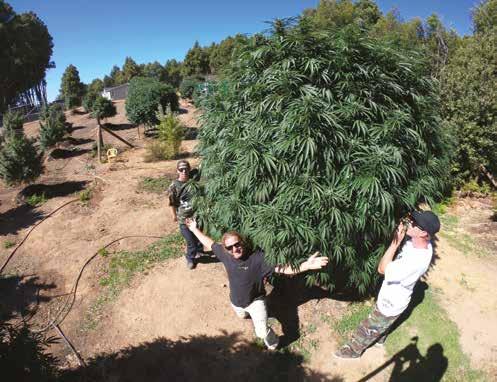
Subcool’s Querkle and Locomotion. They have also produced several Tropical Sleigh Ride crosses: Peppermint Sleigh Ride, Trifle (Tropical Truffle x Tropical Sleigh Ride), and Spumoni Kush, a cross of Tropical Sleigh Ride and a legacy version of Barney’s Farm’s Vanilla Kush that Mendo Dope has nurtured for nearly a decade.
They have recently started breeding with CBD flowers. Results include two cultivars, Dr. Greenshock, described as a “perfect 1:1 ratio” of THC to CBD, each testing about 10%, with a high terpene content of 3.8%, and the flavorful G Lime Burst, testing at about 5% THC to 18% CBD. They hope the high-CBD sun-grown flowers will be a gentle introduction to cannabis for new users. Pollen is collected and stored to pollinate selected plants in the pheno patch in late summer. The phenos must be able to adjust to the specific microclimate about 2,000 feet (610 m) above sea level near Willits, California.
Just 20 miles (32 km) from the Pacific Ocean, the region is a coastal mountain range covered in redwood forest full of microclimates that range from hot and dry to moist and cool. In the Greenshock garden, summers are hot and sunny, but sometimes rain and even snow come early in fall, making it a challenge to harvest before the buds are damaged. This is why the pheno hunt focuses heavily on mold-resistant cultivars and why mold problems are rare
outside the pheno patch. At the start of the grow cycle, the plants are hand-watered. Once transplanted to the mound, they are watered using a drip system that rings around the top of the mounds and guides water away from the plant stems, keeping them dry to prevent mold as they grow as thick as tree trunks.
Before the plants are placed in the ground, the hole is lined with wire cages to prevent gophers and voles from destroying the heart of the root ball. Another advantage of using wire cages is that they help the root system support the top-heavy plants from wind. Wire cages are placed around the plant to support the branches and spread them out so that they capture more light. As the plants grow larger, the supports are adjusted.
To control pests in the garden, they utilize integrated pest management (IPM) techniques like predators and traps. Dyna Traps are used to control caterpillars by capturing moths that lay eggs on the plants. The Dyna Trap has a small light and a fan that attracts and catches moths and little bugs. The crop begins to mature around October, and colas and branches are cut from the plants as they ripen. The plants are dried in a dark room with dehumidifiers and fans to regulate the climate. After drying for one to two weeks, they are broken down into buds and put in a temperaturecontrolled room to cure.



Mr. José info@mrjose.eu

As the harvest approaches, the focus of most growers is on how big the crop will be, whether the flowers smell good and whether the buds are hard enough. Many think there is nothing more they can do for the plants in the last two weeks. But the opposite is true. With the right procedure, you can significantly increase not only the quality of the crop.
What happens in the plants before harvest In the last two weeks before harvest, cannabis plants enter the final phase of their life cycle, when they focus on maturing their buds and forming resin. This process involves a slowdown in the growth of new flowers and a greater focus on thickening the already formed buds.
The resins at the tips of the glandular trichomes, small hairs on the surface of the petals, signal the time remaining until harvest. Its color changes from transparent to milky and finally amber, signaling that it is the ideal time to harvest.
In the last stages before harvest, it is advisable to limit certain nutrients, especially nitrogen, which promotes the growth of the
leaves and green parts of the plant. Excess nitrogen at this time can lead to an undesirable slowing down of ripening and affect the taste and aroma of the final product. On the other hand, phosphorus and potassium are key elements that promote flower and resin formation. I recommend using complete fertilizers designed for cannabis, which are usually tailored to the needs of the plant at all life stages.
Flushing the growing medium is an essential part of the preparation for harvest. Discussions among growers often include questions about when and how long to flush and what products to use. Flushing means applying water without added fertilizer, often at a bit higher volume than normal watering. The aim may be to wash away excess salts accumulated in the medium, or simply to stop the flow of new nutrients so that the plant uses up its reserves.
Flushing to flush out excess salts is necessary if you are using mineral fertilizers and
you notice signs of a metabolic imbalance due to salinization of the growing medium. The build-up of salts increases osmotic pressure, which in turn counteracts the transpiration current, making it more difficult for the plant to absorb water and nutrients. This condition, known as nutrient locking, means that nutrients are present in the medium but cannot be taken up effectively by the plant due to the high osmotic pressure.
If you are growing in pots, you can avoid salinity by using a sufficient drainage layer, properly selected fertilizer and watering, with about 15-25% of the water draining out of the bottom of the pot. In containers watered from below, the risk of salinization is slightly lower than when watering from above, as salts do not tend to accumulate in all parts of the medium. The risk of salinization can be completely avoided if you choose to grow organically.
It is important to flush in the last week before harvest to stop the flow of additional nutrients. This will allow the plants to use up any remaining nutrients stored in the growing medium. If the plant receives no fertilizer during this period, it will focus its energy
on the natural ripening of the flowers, which can lead to better flavor, aroma and overall quality of the harvest. If nutrient residues remain in the plant, this could cause a bitter or chemical taste in the final product. By flushing, the plant also uses the residual energy stored in its tissues. This process promotes resin production and the synthesis of active substances. Flushing does not lead to a higher yield, but it does increase the quality of the final product.
In hydroponic and aeroponic systems, where plants are grown only in an oxygenated nutrient solution, it is advisable to plant fertilizer for only two or three days to avoid excessive leaf fading. The roots have nowhere to draw nutrients from, whereas in traditional growing media such as soil or coconut, nutrients may be present for some time after the fertilizer has been planted. In aeroponic systems, (R)DWC systems and flood tables with expanded clay, it is recommended to reduce the EC (electrical conductivity) to values around 1-1.2 mS/cm during the last week of flushing. In the last three days before harvest, nutrients can be completely removed.
There are a number of products on the market that are specifically designed to flush the
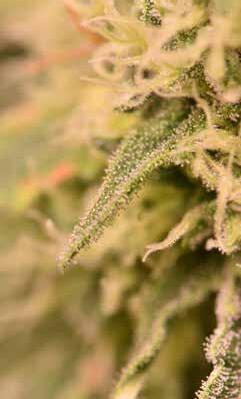
growing medium and help the plants get rid of excess salts and fertilizer residues. These products, such as Final Solution from Advanced Hydroponics of Holland are designed to enhance the flushing process and facilitate the removal of accumulated substances from the growing medium.
Flushing products often contain sugar derivatives that promote the release of salts and nutrients by increasing the osmotic pressure in the root zone. This stimulates the plants to use their own energy reserves, which improves the quality of the final product. Another key ingredient is chelating agents, which bind metal cations such as calcium or magnesium and help to wash them out of the growing medium. This effectively remo -
but reduce the surface tension of water. This allows better penetration of water into the substrate and ensures more efficient leaching of salts and nutrients. Flushing agents do not contribute to higher yields either, but their use improves the taste, smell and overall quality of the harvest. By removing residual fertilizer and salts, the risk of bitter or chemical flavors is eliminated, as I mentioned above.
While the nutrient supply is reduced towards the end of the growing cycle, it is a good idea to keep the light intensity high, as the plants

As a rule, they signal the presence of fungus in the buds.
ves accumulated salts that could hinder the plant’s ability to take up nutrients. They are also used to contain enzymes that help break down organic residues and clean the root zone. The enzymes act as biological catalysts that speed up the breakdown of dead roots and fertilizer residues, improving water and nutrient uptake and promoting root health in the final stages of growth.
Surfactant tensides, on the other hand, do not serve to decompose organic matter,
still need sufficient light for proper photosynthesis and the completion of resin formation and bud maturation. In larger grow rooms, where any reduction in electricity consumption plays a major role, it is possible to reduce the lighting level for the last three to five days by 10-20 % without significantly affecting the weight of the crop.
Remember also the terpenes, which are the primary carrier of flavor and aroma. At temperatures above 26 °C, they evapora -

te, so it is a good idea to keep the temperature at no more than this level for the last week or two. The more intense the smell in the grow room, the more terpenes evaporate from your plants and leave the grow room through ventilation. If reducing the lighting intensity can help to achieve the desired air temperature, it is absolutely relevant to take this step.
Lower humidity helps prevent mould and other moisture problems in dense buds. If you cannot reduce humidity, at least ensure good airflow around the buds and prevent the leaves and flowers from touching each other. You can also reduce watering in the last week, thus reducing the amount of water that evaporates into the growing space. You can reduce the risk of mould by using
In addition to a slight reduction in daytime temperature, you can also try a more significant reduction in night-time temperature. This step may encourage increased production of anthocyanins, the pigments responsible for interesting color changes such as purple or blue hues on leaves and buds.
This process not only contributes to the aesthetics of the plants, but can also positively affect their chemical composition, hence their taste and effect.
Careful protection of the plants against powdery mildew is also part of the effort to achieve the highest possible quality of cannabis. Reducing the relative humidity to 4045 % is very reliable but often very difficult.
appropriate products, either disinfectants or those based on beneficial micro-organisms such as those containing Bacillus subtilis. These microorganisms can help prevent mould growth by forming a natural barrier against pathogens.
The range of these products is constantly changing, so look for products that are effective against botrytis (grey mould), which tends to be one of the biggest risks in the final stages of cultivation.
Definitely avoid systemic fungicides or contact fungicides with a long shelf life if harvest is close. Any residues of these products can be harmful and should not be present in flowers for consumption or further processing.


Jorge Cervantes jorge@marijuanagrowing.com
Dryland crops, although less productive, are possible if the area gets at least one good rain every one to four weeks. Otherwise regular irrigation to supply life-giving water will be necessary. Of course, a thick layer of mulch will cool and protect soil and retain moisture by minimizing evaporation.
In marginal planting zones, soil quality and water quantity can extend the footprint of your garden. Plants draw water and nutrients from the soil. Acceptable soil to grow cannabis holds at least 3 cm of water per 30 cm2 of area and can grow a plant 2-2.5 m tall with a root system 1.5 m across
and 1.8 m deep. In general, sativa-dominant varieties have a bigger root system than indica-dominant varieties and are more drought resistant.
Cannabis grown with insufficient water in marginal soil results in small flowers. For example, a 1.5 cm tall plant may produce only 30-180 gm of high-quality dried flowers. By contrast, a plant in good soil with ample water will be more robust and yield 2-10 times more than those in poor soil. Even though the harvest is meager, so is the workload involved.

Alpine mountain climates are freezing cold much of the year. Freezing temperatures, mineral-heavy acidic soil and wind top the list of grower concerns. Summer temperatures in the mountains can dip to -1 degrees C or lower in the summer at low elevations, 600 m. Temperatures below 10 degrees C virtually stop growth and temperatures below 5 degrees C can cause plant tissue damage in some varieties. Low temperatures cause stress in plants and a reduction in harvest weight. On the other hand, plants in high alpine climates tend to produce 10-20 percent more cannabinoid-rich resin than those in lower gardens.


An easy inexpensive way to feed and irrigate cannabis plants in the absence of a water source is to cut a 5 mm hole in the bottom of a 20 L bucket and fill with water and water-soluble fertilizer. Place one bucket by each plant with the hole oriented near the stem. Buckets should be refilled every 5-10 days during the hottest weather. Water bladders for irrigation in remote areas are also available from internet vendors. The extra water and nutrients will really pay off when it is time to harvest.

The first frost typically arrives in late August to early September and the last frost sometime in May or June. Spring and fall months are rainy with a dry period in July and August. Cold rains in the fall can cause mold. Transplanting early maturing varieties of 60 cm seedlings and clones grown indoors helps overcome the climate limitations.
Typically, alpine mineral soils lack humus and it must be added. Wind is more pervasive at higher elevations causing plants to dry out quickly. For best results, plant in the most fertile soil, commonly found where grass pastures grow. You can help your plants climatic stress by backfilling planting holes with a soil mix of compost, peat moss, coco coir, chicken manure and slow-acting layers of organic fertilizer.
Tropical climates are generally warm to hot and humid. Rainy and dry seasons vary by location. Most jungle and tropical climates have daily rains. Protecting plants from rain with an open-air greenhouse that has no
walls, will increase air ventilation and circulation and help avoid bud mold and other problems. The closer to the equator, the less deviation there is between the length of days and nights. Extra hours of artificial light are necessary to keep plants in the vegetative growth stage.
Tropical sativa varieties are often favored in these regions because they are acclimated, mold- and insect-resistant and grow a large root system.
Nighttime temperatures and humidity can present as big of a problem and hot humid days. Hot nighttime temperatures slow plant growth. Growth slows if nighttime temperatures are near or above 28 degrees C. At this temperature and beyond growth is negligible. Nighttime cooling could be necessary to keep plants growing well.
I interviewed Ryan Doran and Dave Feichko from Thailnd Organic Cannabis Farms in Thailand. They are growing cannabis under artificial lights, in greenhouses and in several large fields. Below is a synopsis of the interview that concentrates on climate, growing conditions and tropical cultivars.
Tropical climates typically have a dry season and a rainy season. All tropical climates have a 12-hour photoperiod. Tropical zones can be outstanding growing climates.
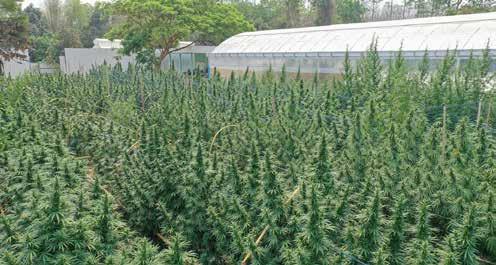
Much of Thailand is fairly dry from October to April. Daytime relative humidity (RH) levels start at about 50 percent in October and drop to single digits by early April. Nighttime humidity is high, 80-90 percent. The longest summer days are about 13 hours and the shortest days in winter are 11 hours. Growing vegetative plants under supplemental light is essential.
Local varieties including Northern Thai landrace cultivars are acclimated to the tropics. Local landraces often grow well under long nights and short days. They tend to be less responsive to light cycles than cannabis acclimated to non-tropical latitudes. Growing equipment and supplies are diffi -
cult to find. A few grow stores are located in tropical regions including Thailand. But the stores are set up to help small home growers. If you plan to grow a fair-sized field of cannabis, you must get creative on sourcing supplies, or order them from the abroad. Diseases and pests are everywhere in the tropics. Lack of freezing temperatures allows diseases and pests to overwinter and flourish. A clean garden environment along with plenty of soap and water sprays control most problems. Cover the soil with black plastic will help kill nematodes and other soil pests. Biological controls including bacillus thuringiensis (Bt) and Beauveria bassiana are readily available.
This article is supported by the Cannabis Encyclopedia, ¡¡FREE!! in Eleven (11) lanuages – Czech, Dutch, English, French, Italian, Japanese, German, Portuguese, Russian, Spanish, and Ukrainian at, www.marijuanagrowing.com.
Award-Winning cannabis cultivation author Jorge Cervantes teams up with Seedsman for a FREE, comprehensive digital book on home growing.
100-page digital book
270+ color images
Interactive – Searchable
Comprehensive guide to cannabis cultivation


Beginner and advanced growers
Easy-to-follow cultivation examples
8 chapters of cultivation wisdom
Dedicated to increasing cannabis yields
Discover the magic of cannabis!
www.marijuanagrowing.com/grow-cannabis-book
Co-Authors
Chief Scientific Officer, Dr. Gary Yates
Stefan Meyer
Table of Contents
• Cannabis Botany
• Life Cycle of Cannabis
• Cannabis Seeds & Seedlings
• Plan Your Garden
• Grow Room Setup
• Twelve-week Garden
• Harvest, Manicuring, Drying, Curing & Storage
• Diseases, Pests & Problems

Author Marijuana Horticulture.
Legendary Jorge Cervantes, published in eight languages sold over a million copies worldwide.

Text & Photography: Derrick Bergman/ Gonzo Media
The summer of 2024 was a good one for Snoop Dogg.
The 52-year-old hip hop legend, actor and worldwide cannabis figurehead stole the show as a commentator at the Olympic Games in Paris, opened his first dispensary in Los Angeles and opened his first coffeeshop in Amsterdam. Soft Secrets then (of course) went to visit this coffeeshop.

Calvin Cordozar Broadus Jr.. continues to surprise everyone. His announcement, at the end of 2023, that he gave up smoking, struck like a bomb and was brought almost as world wide ‚breaking news‘. But it turned out to be a publicity stunt for smokeless fire hives. During the Olympic Games in Paris, he seduces everyone with his stylish outfits and hilarious commentary. The man is as sympathetic as he is cool.
Snoop is personally present at the opening of his first legal weed shop in the USA on July 14 in Los Angeles. The name is an abbreviation: S.W.E.D. Fans know that those letters stand
for Smoke Weed Every Day, from Dr. Dre‘s song The Next Episode, with Snoop Dogg.
When the coffeeshop with the same name officially opened in Amsterdam on 1 August, Snoop was still in Paris. For the publicity, his absence did not matter a lot: His new coffeeshop receives worldwide attention. It is almost impossible to open a new coffee shop in Amsterdam. Snoop Dogg has signed a license deal with the owner and license holder of coffeeshop Funky Munkey, in the Marnixstraat. This Rachid Bahida owns several coffeeshops in Amsterdam. He previously signed a license agreement with boxer Mike Tyson, for his coffeeshop Softland in the Spuistraat. It‘s been called Tyson 2.0 since March 2023.
The municipality of Amsterdam is not happy with this trend of world stars that link their name to a coffeeshop. It is illegal for coffeeshops to make any kind of advertising.
Tyson 2.0 received a letter from Amsterdam mayor Femke Halsema after Tyson visited his
According to Dutch lawyer Maurice Veldman, who specializes in cannabis, Snoop and Tyson do not have to worry. In a column on a Dutch website he writes:
“Making advertising for coffee shops is not the same as advertising drugs. You can add to the facade of a coffeeshop the text ‘Coffeeshop S.W.E.D.’ or ‘Coffeeshop Mike Tyson 2.0’, because this does not refer to cannabis. There should be no image of a cannabis leaf, but that is not the case. Only a connoisseur knows what S.W.E.D. stands for, but these letters don‘t exactly encourage the unsuspecting passer-by to smoke weed. He doesn‘t accidentally come into contact with cannabis.“
When I visit S.W.E.D. on a Tuesday afternoon in September it is quiet, but certainly not empty. The Portuguese dealer is friendly and makes a nice cappuccino. From the weed menu I choose a Dutch Sunset Sherbert.
The Dutch weed cost between €11 and €16 per gram, the Californian starting at €30

coffeeshop last year and customers were able to win a Meet & Greet with him when they spent at least €95. The mayor warned that this action is a violation of the advertising ban on coffeeshops.
Snoop Dogg also got chased by mayor Halsema. The city is investigating how the license agreement is structured and whether the name S.W.E.D. violates the advertising ban. According to a Halsema spokesperson, this ban means ‘that a coffeeshop can only indicate in the name that it is a coffeeshop’.
“We are going to investigate whether this is permitted under the advertising rules”, the spokesperson said.

per gram. The Papaya Bombis the most expensive: €100 per gram! But hey, this is Amsterdam. Everything is expensive. And you come here not only to buy cannabis, but also for the vibe.
The interior of the shop has had a total makeover, it contributes to the atmosphere in quality and style. A real eye-catcher is a big poster of a Doberman dog sitting at a table, surrounded by smaller tables with ashtrays. The ceiling is a successful mash up of Delft‘s Blue with Paisley shapes and weed leaves. Also cool: The big transparent hand that makes the Westside sign, referring to the neighborhood in Los Angeles where Snoop Dogg grew up.
It‘s nice to chill out here and with Snoop‘s laid back hip-hop, it is not easy to get bored. From screens on the wall, the hip-hop legend looks at you from all sides. Also downstairs is a basement, which has a more underground vibe. There is even a terrace, but the permit is not yet complete. Let‘s hope that it will be soon, because this is a great place to sit and relax while watching people passing by. Someone should inform Snoop that the street called Lijnbaansgracht, that runs behind the shop, actually is the place where traditional rope was made from hemp, hundreds of years ago during the Dutch Golden Age. So S.W.E.D. in fact looks out onto the OG hemp canal of Holland!
S.W.E.D. - Marnixstraat 333, Amsterdam
Open Every day from 07.00 AM till 01.00 AM


Robert B.

When it comes to marijuana, many think it is all about the psychoactive tetrahydrocannabinol (THC), which causes the high. Many other cannabinoids and terpenes, instead, are crucial for the quality of the high.
If you manage to get your hands on some dronabinol, you will have a finished drug that contains only THC as active ingredient.
The highly selected coffeeshop strains often have an extremely high THC content, with other cannabinoids, such as cannabidiol (CBD), present in lower concentration. Those
who take high doses will no longer like the high, may become temporarily paranoid and develop a ‘pothead psychosis’ until the next day.
Various cannabinoids and terpenes have a significant influence on the high or the medicinal effect of marijuana or its extracts and preparations. In particular, the above-mentioned CBD makes high THC doses more pleasant.
Many users, therefore, are not into marijuana with an extremely high THC content. They
prefer one that is more balanced and easier to enjoy. We are becoming more aware of these basic concepts in these times of ‘thaw politics’.
We can research and exchange information more easily, which sometimes makes things more complex. But, please, do not expect too much in-depth information in this short article.
THC has different molecular versions. These molecules are partly assembled in the cannabis plant. THCA, which is non-psychotropic, is formed before the psychoactive and medicinally effective delta 9 THC. At this preliminary (precursor) stage, the molecule is converted into delta 9 THC in the plant or by heating. If you smoke this delta 9 THC or spray it under your tongue, you will ingest delta 9 THC. But to eat it, you also have to dissolve it into fatty acids.
To do so, first of all, hemp butter can be prepared for use in baking. It will be absorbed by the intestine via fatty acids or a carrier making the cannabinoid water-soluble. Then it is metabolised by the liver into 11 hydroxy THC. In the process, a part of the active ingredient is broken down, but 11 hydroxy THC is more potent and the process balances out to some extent.
For certain conditions like cancer, delta 9 THC should not be inhaled but eaten, as this 11 hydroxy THC is thought to counteract cancer better; research in this respect is still being done. With a joint, a patient could eat better and endure his tumour pain. With hash butter cookies, he can also fight his cancer. At the same time, other therapies should not be interrupted, of course, because a few hash cookies will hardly suffice.
Other cannabinoids are also present in marijuana flowers at a precursor stage and also at an active stage. Delta 9 THC, however, has a special feature in that it oxidises when exposed to oxygen and is therefore no longer effective. This is why, for instance, brick hash turns black towards the edges and not inside. So, while delta 9 THC oxidises in the air, THCA does not oxidise. When exposed to heat during smoking or baking, it transforms into the effective delta 9 THC. This means that even marijuana flowers stored in the air will still have an effect.
If you are after a psychotropic effect, you should not store your marijuana flowers, hashish or extract in the open air, but at
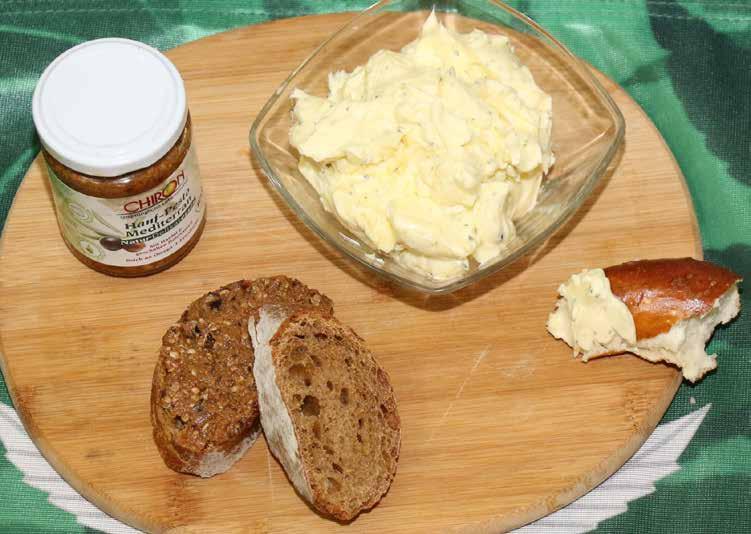
least put them in a bag closed by a clamp. To shrink-wrap, vacuum or store them in a tightly sealed tin would be even better. The idea is not to keep opening and closing the tin, but to have one tin for storage and one for ongoing consumption.
Marijuana, hashish or extracts should always be stored in the dark or in brown-glass jars or bottles. Furthermore, the marijuana to be stored should not be damp. Hashish and extracts should also not be exposed to moisture. And that is not all. Marijuana, hash
or extracts contain terpenes. On their own, they probably have no effect, but influence the effect of cannabinoids. Apparently, several terpenes complement each other.
However, these are very volatile. Some of the terpenes already volatilise at warmer room temperatures. Marijuana loses its taste and its effect is no longer harmonious. For this reason, you should not store your marijuana flowers under the roof in summer, but in a dry cellar. Many consumers even freeze their flowers. During thawing, it is important to
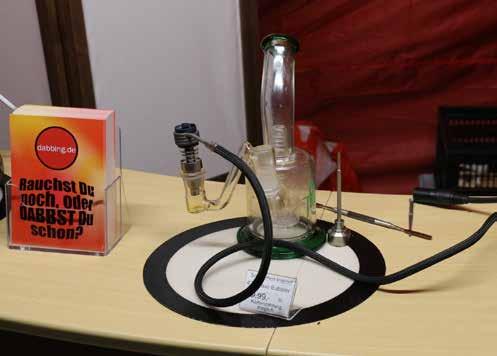
delta 9 THC, which oxidises in the air. Those who are interested in the effect of delta 9 THC or 11 hydroxy THC should wait for decarboxylation until shortly before consumption. Decarboxylation is a technical term for the conversion of e.g., THCA into delta 9 THC by heat. With too much and too long heat, however, delta 9 THC breaks down again.
The precursors of other cannabinoids can be converted by heat into effective compounds and then eventually broken down again. Different cannabinoids require other times and temperatures to that end, but flowers can be treated in only one of these sets of parameters.
As a result, the choice between a more volatile or more intensive decarboxylation depends on the strain and on the specific process applied; but no empirical formula can be defined. 20 to 120 minutes at 80 to 140° Celsius would be the benchmark. More time should be used at lower temperatures and less at higher temperatures. At higher temperatures, however, not much of the terpenes will be left.
If you wish to smoke a joint or a bong, heat your marijuana flowers in a vaporiser, or use hemp butter for baking; heat will already produce an effect and automatically trigger decarboxylation. Many consumers say that heating before consumption or before processing leads to a greater effect at a later stage. In that case, however, marijuana

check that no moisture has formed in some spots in the bag, otherwise the flowers need to be dried again.
After discussing these basics and the strategy for suitable storage, we now move on to the correct method of preparation. In marijuana flowers, cannabinoids are present in non-active precursor stage and in active molecular compounds. When heated, precursors are transformed, for example, into
should be heated either for less time or less intensively.
On the other hand, those who process their marijuana into ointments, put it in alcohol or process it into drops or extracts that are eaten without heating will waste all its THCA. Then it would make sense to put the marijuana flowers in a suitably heated oven before processing them.
Especially in these situations, decarboxylation is very important, as a good third of the cannabinoids in the marijuana flowers may be present as an ineffective precursor.
Soft Secrets is published by Discover Publisher BV
Galvaniweg 11, 5482 TN Schijndel, Netherlands
Telephone: +31(0)73 5498112
E-mail: info@softsecrets.nl
Web: www.softsecrets.com
Editor: Cliff Cremer
Contributors: Stoney Tark, Jorge Cervantes, Ed Rosenthal, Mr. José, Green Born Identity (G.B.I.), TricomaTeam, Tommy L. Gomez, Fabrizio Dentini, Olivier F., Hortizan, Derrick Bergman/Gonzo Media and others.
Photography: iStock, Unsplash
Editorial adress:
E-Mail: readers@softsecrets.nl
Advertisements:
E-Mail: info@softsecrets.nl
A word from the publisher:
Soft Secrets is a bi-monthly free magazine which is published in The Netherlands (called Highlife), Germany, France, Italy, Spain, UK, Poland, Czech Republic and Chile. World wide there is a process going on of relative
liberalisation towards the use of cannabis, be it for medicinal or recreational purposes. Several countries legalised cannabis as a way of separating soft and hard drugs, as it has proven to do in Holland. Other countries legalised the use of medicinal cannabis, including the right to grow cannabis plants for one’s own use. The publisher wants to highlight the process of normalisation of cannabis use. This assumes that the publisher does not necessarily agree with everything that appears in articles and advertisements. The publisher therefore distances himself explicitly from published statements or images that might give the impression that an endorsement is being made for the use and/or production of cannabis.
Nothing from this publication may be copied or reproduced in any format without prior permission from the publisher and other copyright holders. The publisher is not responsible for the content and/or point of view of advertisements. The editor takes no responsibility for unsollicited submissions.
The publisher has endeavored to reach all copyright holders of photos and/or images. Those who still believe they are entitled to these rights may contact the publisher.
Next issue out













































